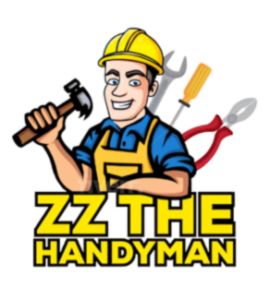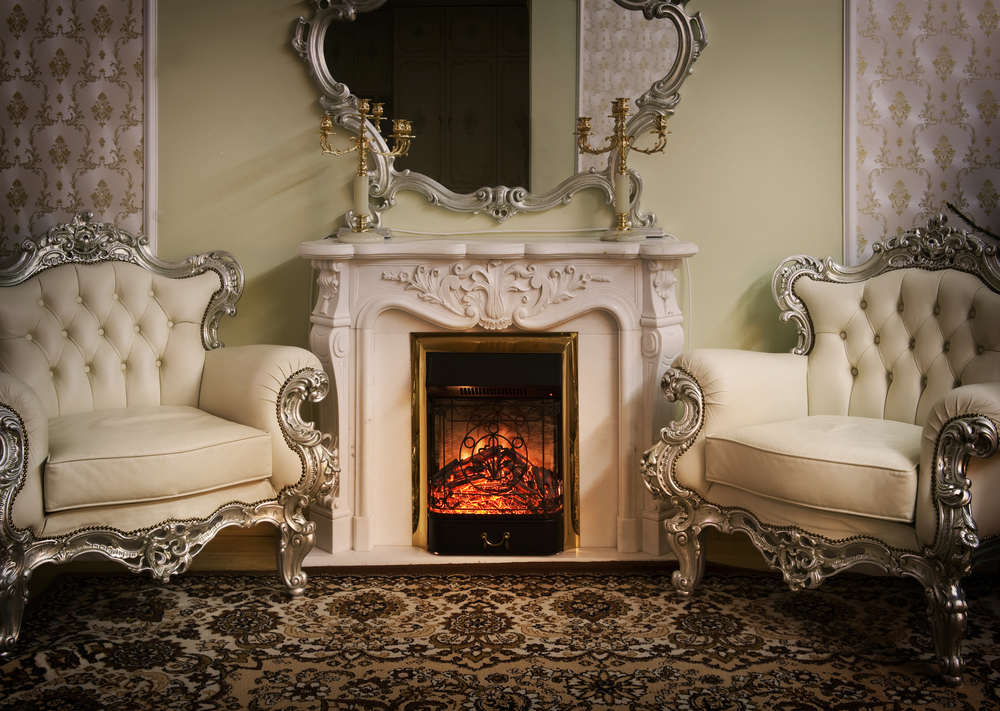Introduction
An open, unused fireplace may look charming, but it can act like a straw, pulling warm, conditioned air straight out of your living space and replacing it with cold drafts. According to the U.S. Department of Energy, leaving an open damper in winter is equivalent to leaving a window wide open, wasting up to 14 percent of your total home energy budget. For homeowners determined to trim their utility bills without sacrificing cozy aesthetics, properly closing off the fireplace is one of the quickest wins available. In this in‑depth guide, ZZ the Handyman walks you through the main approaches—from temporary, renter‑friendly fixes to permanent, code‑compliant solutions—while highlighting safety caveats, tool lists, and maintenance tips. Whether you’re tackling the job yourself or deciding when to call a pro, you’ll find everything you need below.
Why Unused Fireplaces Leak Heat
- Stack Effect: Warm indoor air rises and escapes up the flue; colder, denser outside air sneaks in through low‑level gaps, causing drafts near the floors.
- Negative Pressure: Exhaust fans, clothes dryers, and other appliances pull air from the path of least resistance—often an uncapped chimney—stealing your heated air supply.
- Damper Gaps: Traditional metal dampers rarely form a full seal. Even a ⅛‑inch gap over a 12‑inch‑diameter flue equals a fist‑sized hole in your wall.
- Cracks & Crumbling Mortar: Aged brickwork, missing fire bricks, or deteriorated mortar develop pathways for heat loss and water intrusion.
No Firebox Insulation: Fireplaces sit on exterior walls; without backside insulation, they become heat sinks, absorbing the warmth you just paid to create.
Four Main Ways to Close Off a Fireplace
| Method | Skill Level | Cost Range (USD) | Best For | Reversible? |
| Chimney Balloon / Draft Stopper | Beginner | $40–$75 | Quick seasonal sealing | Yes |
| Rigid Insulation Plug (“Flue Plug”) | Beginner–Intermediate | $60–$120 | Year‑round efficiency | Yes |
| Glass Fireplace Doors w/ Weather‑Strip | Intermediate | $250–$700 | Occasional burning + aesthetics | Semi |
| Full Permanent Closure (Insulated Panel & Top‑Seal Damper or Flue Cap) | Advanced / Professional | $500–$1,800 | Fireplace permanently out of service | No |
(Prices current mid‑2025; regional labor may vary. Contact ZZ the Handyman for an exact quote in your area.)
Step‑by‑Step Instructions
Option 1: Chimney Balloon
Tools & Materials
- Inflatable chimney balloon sized to your flue
- Hand pump or straw (often supplied)
- Flashlight & drop cloth
Steps
- Measure the Flue. Shine a flashlight upward; measure the inside width and depth roughly 6 inches above the damper.
- Choose the Right Size. Balloons come oversized; select the nearest larger model so edges grip tightly.
- Partial Inflation. Inflate until pillow‑soft, then fold and push it past the damper.
- Seat & Inflate Fully. Center the balloon horizontally, then pump until it presses snugly against all four walls.
- Tag the Tether. Leave the balloon’s tether hanging visibly in the firebox with a reminder label, so future users know to deflate before lighting a fire.
Maintenance
- Inspect and reinflate each season.
- Remove before any chimney sweep visit.
Option 2: Rigid Insulation Plug
Tools & Materials
- 2‑inch polyisocyanurate board (foil‑faced)
- Utility knife, straightedge, foil tape
- Heat‑resistant silicone caulk (optional)
Steps
- Template the Opening. Tape craft paper over the damper frame to trace the exact outline; transfer to insulation board.
- Cut & Dry‑Fit. Score with a utility knife; snap cleanly. Aim for a friction fit with no more than ⅛‑inch wiggle.
- Seal Edges. Wrap the perimeter with foil tape for durability.
- Install Handle. Screw a small drawer pull or hot‑glue a fabric tab for easy removal.
- Insert Plug. Push the board snugly against the damper ledge. For extra air‑tightness, run a bead of removable silicone around the edges.
Pro Tip from ZZ the Handyman: Mark the front “THIS SIDE OUT” so you reinstall correctly after seasonal cleaning.
Option 3: Glass Doors with Weather Stripping
Tools & Materials
- Prefab glass door kit sized to your firebox opening
- Drill/driver, masonry bits, anchors, screws
- High‑temp silicone gasket tape
Steps
- Measure the Firebox Face. Height and width at the front opening—not deep inside—determine the kit size.
- Attach Mounting Brackets. Most kits use L‑shaped brackets anchored into brick mortar joints.
- Hang & Level Doors. Test the swing; adjust hinge screws until doors close flush.
- Add Gasket Tape. Line the inside frame for an improved air seal while still allowing occasional fires.
Downside: Glass conducts heat outward in summer; a thermal drape may be needed to block solar gain.
Option 4: Permanent Closure with Panel & Top‑Seal Damper
A permanent closure involves two components: an interior insulation panel at the firebox and a lock‑tight top‑seal damper or flue cap at the chimney crown. Because code often mandates accessibility for future inspection—and because working on a roof is dangerous—ZZ the Handyman recommends professional installation.
Process Overview
- Homeowner Decision. Decide never to burn wood/gas again or plan to convert to a high‑efficiency insert later.
- Chimney Inspection. A Level II camera scan checks for structural issues before sealing.
- Install Top‑Seal Damper. This stainless steel plate mounts atop the flue and compresses a silicone gasket with a spring handle; when closed it’s virtually airtight and keeps out rain, pests, and downdrafts.
- Fabricate Interior Panel. A cement‑backer‑board sandwich with rigid insulation forms an airtight barrier flush with the firebox face, then gets finished with matching drywall or a decorative cover.
- Documentation. Contractors label the panel and file closure details with local building authorities for future owners.
Safety & Code Considerations
- Combustion Air: If you have other fuel‑burning appliances (gas furnace, water heater), make sure closing the chimney doesn’t starve them of makeup air.
- Moisture Management: Water vapor can condense inside a sealed flue if leaks persist. A top‑seal damper plus intact crown flashing is critical.
- Wildlife: Birds or bats already nesting? Eviction by a licensed wildlife technician is required before closure.
- Fire Risk: Never block a fireplace that’s still hot or contains embers. Balloon options must be removed before any future fire.
- Disclosure: Many U.S. states require sellers to disclose permanent fireplace decommissioning during a real‑estate transaction. Keep receipts from ZZ the Handyman to document professional compliance.
DIY vs. Hiring a Pro
Closing a fireplace looks simple—until you’re perched on a 10‑pitch roof wrestling with a metal damper in January winds. Homeowner tasks such as chimney balloons or rigid plugs are weekend‑friendly; installing glass doors or top‑seal dampers straddles the line. Factor in ladder safety, masonry drilling, and warranty validity for prefab kits. ZZ the Handyman brings specialized tools, infrared cameras to verify the seal, and the experience to spot hidden flue cracks you might miss. Better yet, skilled pros complete the job in hours, often bundling it with a yearly chimney sweep and inspection—saving you time and money long‑term.
Maintenance Checklist
- Seasonal Plug Removal: Take out balloons or plugs every spring and fall to check for soot buildup and moisture.
- Inspect Exterior Cap: After storms, visually confirm that the top damper or cap still sits flush.
- Vacuum Firebox: Even sealed, ash dust settles; vacuum before it migrates into living areas.
- Check Gaskets: Glass‑door weather‑strips compress over time; replace every 3‑5 years.
- Schedule Annual Inspection: Have ZZ the Handyman or a certified chimney sweep examine the entire stack for shifting mortar and flashing leaks.
Frequently Asked Questions
Q: Will a chimney balloon melt if I accidentally light a fire?
A: Most balloons include a safety burst disk that deflates quickly when temperatures rise. Still, melted plastic can be messy—always remove before use.
Q: Can I close off a fireplace and later install a gas insert?
A: Absolutely. The top‑seal damper can be reopened; the interior panel is removable. Inform ZZ the Handyman of the plans so we can use reversible fasteners.
Q: How much heat do glass doors save?
A: Studies show high‑quality, gasketed doors cut fireplace heat loss by 80 percent compared with an open damper alone.
Q: Are balloons safe for gas log sets?
A: No. Gas appliances need an always‑open flue. Choose a gasketed damper instead.
Conclusion
A poorly sealed fireplace is a silent budget buster, siphoning away hard‑earned rupees or dollars each heating season. By installing a simple chimney balloon or investing in a permanent closure, you can see instant savings and a more comfortable, draft‑free living room. Ready to button up your hearth for good? ZZ the Handyman offers free on‑site assessments, infrared leak detection, and same‑day installation services across the region. Call (808) 378‑5570 or visit ZZtheHandyman.com to schedule your consultation and start capturing the warmth you pay for—right where it belongs


